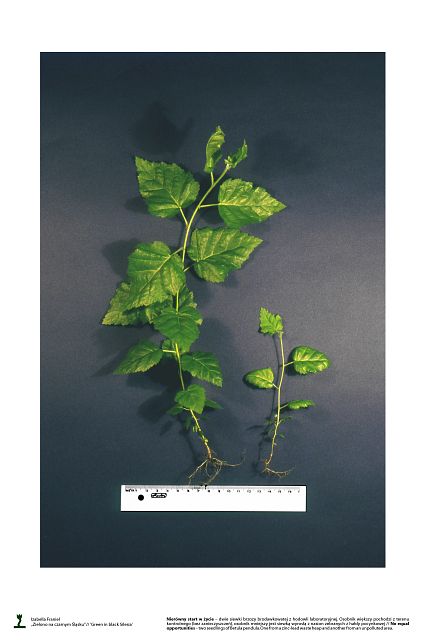 |
'Green in black Silesia'
'Ecophysiological features of selected plants growing on areas under anthropogenical pressure' IZABELLA FRANIEL
University of Silesia, Faculty of Biology and Environmental Protection,
Department of Ecology; Jagiellońska28, 40-032 Katowice
e-mail: ifraniel@us.edu.pl |

Description popularizing the research project
The black hills towering over the rust belt area of Silesia are equally black in spring, summer and autumn. Only in winter merciful snow covers the heaps of slag and scorched rocks. On hot days winds lift clouds of dust and sprinkle it over thickets and building making them look just like the heaps it came from. The unsettling black is rarely disturbed by shy green silhouettes of birches. The view of a solitary tree in the vast blackness is hypnotizing in its sadness and dread. It is a picture of a birch grove that a man seeks in this dusty place.
It is not easy to by a birch on the heap. A young seedlings must resist high temperature of the ground, higher than in a wood. It cannot wither despite the fact the rain water immediately flows to the bottom of the heap, and winds with sun together, dry the precious drops of water. It cannot die when its roots reach deep into the solution of heavy metals. It really does not matter that it is smaller and modest when compared to trees growing in fertile, shaded glades. Does the will of survival lie in its steadfast character or maybe in its genes?
We need thousands of strong seedlings as the heaps filled with toxic waste require dense vegetation urgently. So what a birch must be like to survive and thrive in this inhospitable place?
So what a slag heap must be like to let the birches stay alive?
Abstract
Heavy industry is the greatest and most hazardous source of waste in Upper Silesia. The need for natural reclamation of zinc heaps is urging, particularly because of high concentrations of heavy metals and other toxic substances. Complex physico-chemical tests of the soil, as well as physiological and ecological studies of the plants are necessary to improve and facilitate the reclamation techniques used on the dumping grounds. The physiological ad ecological research can be done in two directions: 1) pot seedling cultures and 2)-tree seedlings growth directly on the dump soil. The present research attempts to show the results whose aim was to establish the degree of sensitivity of Betula pendula seedlings to the adverse conditions of the zinc lead waste. Moreover, the research deals with the concentrations of heavy metals in the biomass of Cardaminopsis Halleri as well as the ecology of this species growing on the zinc-lead waste dumps. The results were compared with the same species from areas with considerably lower levels of contamination (Uroczysko Buczyna).

